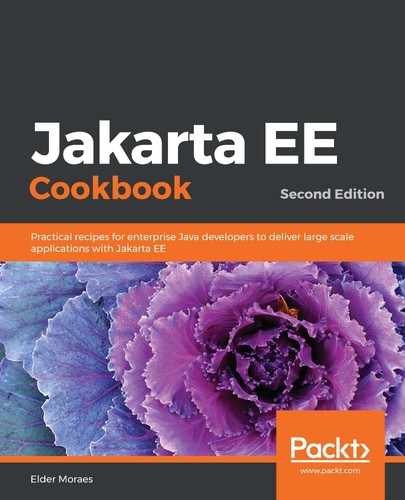Take the following steps to complete this recipe:
- First, we create a User POJO:
public class User implements Serializable{
private Long id;
private String name;
public User(long id, String name){
this.id = id;
this.name = name;
}
public Long getId() {
return id;
}
public void setId(Long id) {
this.id = id;
}
public String getName() {
return name;
}
public void setName(String name) {
this.name = name;
}
}
- Then, we create a message sender:
@Stateless
public class Sender {
@Inject
private JMSContext context;
@Resource(lookup = "jms/JmsQueue")
private Destination queue;
public void send(User user){
context.createProducer()
.setDeliveryMode(DeliveryMode.PERSISTENT)
.setDisableMessageID(true)
.setDisableMessageTimestamp(true)
.send(queue, user);
}
}
- Now, we create a message consumer. This is our MDB:
@MessageDriven(activationConfig = {
@ActivationConfigProperty(propertyName = "destinationLookup",
propertyValue = "jms/JmsQueue"),
@ActivationConfigProperty(propertyName = "destinationType",
propertyValue = "javax.jms.Queue")
})
public class Consumer implements MessageListener{
@Override
public void onMessage(Message msg) {
try {
User user = msg.getBody(User.class);
System.out.println("User: " + user);
} catch (JMSException ex) {
System.err.println(ex.getMessage());
}
}
}
- Finally, we create an endpoint just to send a mock user to the queue:
@Stateless
@Path("mdbService")
public class MDBService {
@Inject
private Sender sender;
public void mdbService(@Suspended AsyncResponse response){
long id = new Date().getTime();
sender.send(new User(id, "User " + id));
response.resume("Message sent to the queue");
}
}
